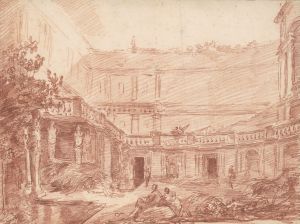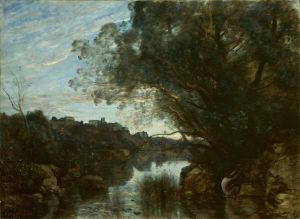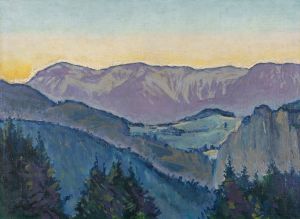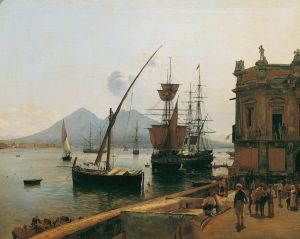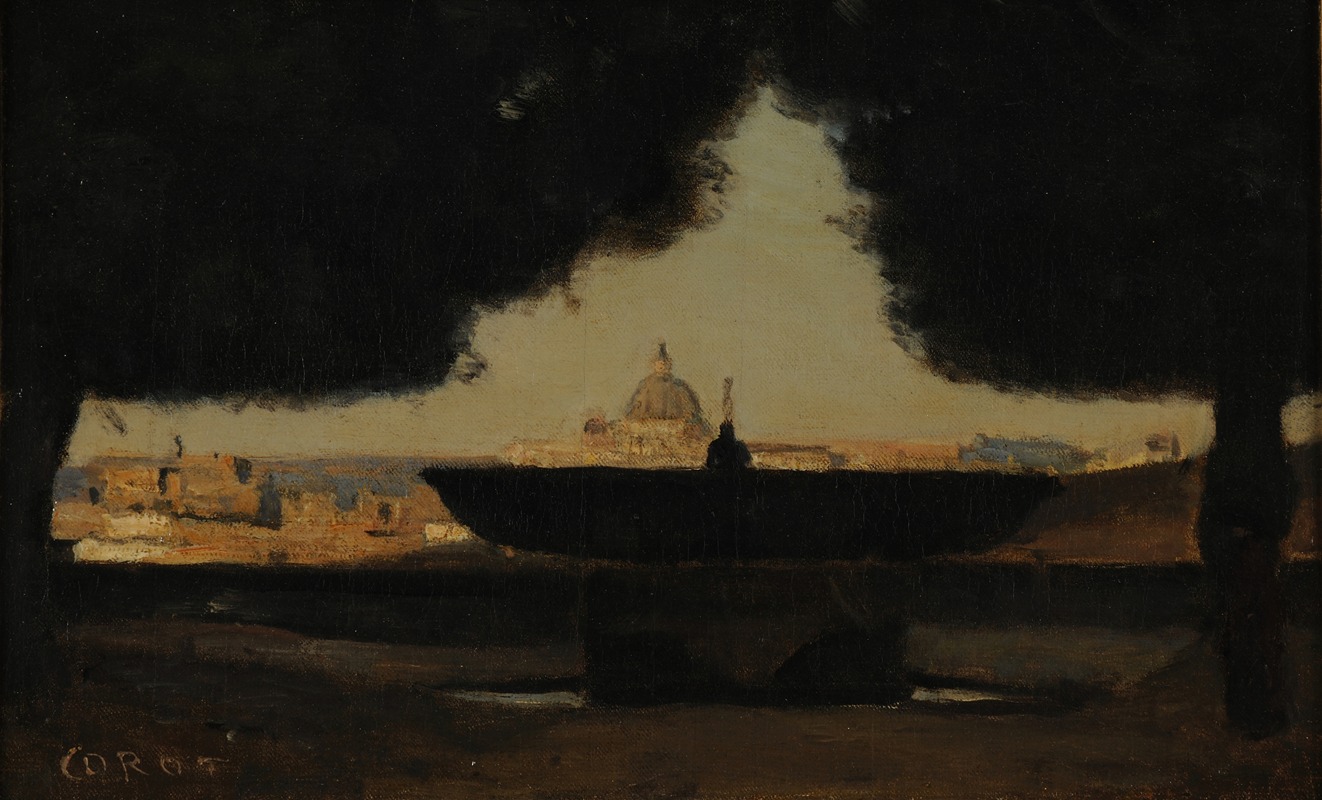
La vasque de la Villa Médicis
A hand-painted replica of Jean-Baptiste-Camille Corot’s masterpiece La vasque de la Villa Médicis, meticulously crafted by professional artists to capture the true essence of the original. Each piece is created with museum-quality canvas and rare mineral pigments, carefully painted by experienced artists with delicate brushstrokes and rich, layered colors to perfectly recreate the texture of the original artwork. Unlike machine-printed reproductions, this hand-painted version brings the painting to life, infused with the artist’s emotions and skill in every stroke. Whether for personal collection or home decoration, it instantly elevates the artistic atmosphere of any space.
"La vasque de la Villa Médicis" is a painting by the French artist Jean-Baptiste-Camille Corot, created in 1826. Corot, a pivotal figure in landscape painting, is known for his contributions to the Barbizon School and his influence on the development of Impressionism. This particular work is a testament to his early style and his dedication to capturing the essence of nature and architecture.
The painting depicts the fountain at the Villa Medici in Rome, a site that has long been a source of inspiration for artists. The Villa Medici, originally built in the 16th century, served as a residence for the Medici family and later became the French Academy in Rome. It has been a significant cultural and artistic hub, attracting numerous artists who sought to study and draw inspiration from its classical architecture and lush gardens.
In "La vasque de la Villa Médicis," Corot captures the tranquil beauty of the villa's garden, focusing on the large, ornate fountain that stands as the central feature of the composition. The painting is characterized by its delicate handling of light and shadow, a hallmark of Corot's work. The soft, diffused light creates a serene atmosphere, enhancing the sense of calm and timelessness that pervades the scene.
Corot's use of color in this painting is subtle yet effective. He employs a muted palette dominated by greens, grays, and earthy tones, which helps to convey the natural beauty of the garden and the aged elegance of the fountain. The careful attention to detail in the foliage and the architectural elements reflects Corot's keen observational skills and his ability to render the natural world with both accuracy and poetic sensitivity.
The composition of "La vasque de la Villa Médicis" is balanced and harmonious, with the fountain positioned slightly off-center, drawing the viewer's eye into the depth of the garden. The surrounding trees and shrubs frame the scene, creating a sense of enclosure and intimacy. This compositional technique is typical of Corot's work, where he often sought to create a sense of unity and coherence within his landscapes.
Corot's time in Italy, particularly his stay in Rome, was crucial to his artistic development. He arrived in Rome in 1825 and spent several years there, immersing himself in the study of classical art and the Italian landscape. "La vasque de la Villa Médicis" is one of the many works he produced during this period, reflecting his deep appreciation for the Italian scenery and his growing mastery of landscape painting.
This painting is an excellent example of Corot's early style, which combines elements of neoclassicism with a burgeoning interest in naturalism. It demonstrates his ability to blend the structured, formal qualities of classical art with a more personal, emotive approach to depicting nature. This synthesis would become a defining characteristic of his later work and would influence a generation of artists who followed him.
"La vasque de la Villa Médicis" remains an important piece within Corot's oeuvre, showcasing his skill as a landscape painter and his ability to capture the serene beauty of the natural world. It is a testament to his enduring legacy and his significant contribution to the history of art.





